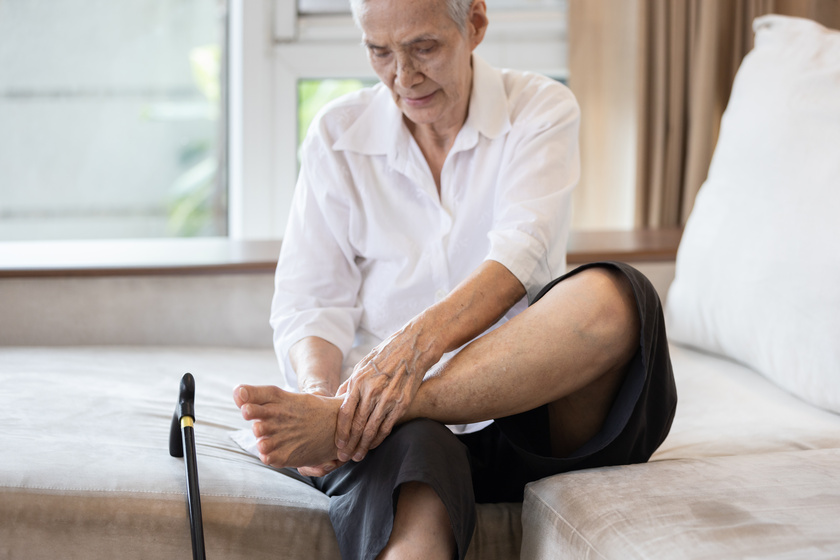Many elderly people experience persistent foot pain, but caregivers can help their loved ones feel better. The early symptoms of a systemic ailment frequently manifest in the feet, thus family caregivers can also inspect their loved one’s feet to gain insight into their health. Circulatory issues, diabetes, and arthritis are examples of these systemic ailments. Caregivers should keep an eye out for symptoms including dry skin, brittle nails, discoloration, and hair loss on their legs. Additionally, they should inquire about any cramping, numbness, or tingling in the elderly’s aging feet.
Foot Disorders Can Implicated Mobility
According to the American Podiatric Medical Association, an average American has walked 75,000 miles by the time they reach 50 years old. This information helps to explain why the elderly typically experiences painful foot disorders. According to Foot.com, elderly people who have foot disorders are more likely to require greater assistance from their caregivers. Foot disorders are typically uncomfortable and limit an elderly’s movement. However, family caregivers can help their loved ones by routinely checking and caring for their feet.
Assisting Older Adults Through Proper Foot Care
Caregivers need to be aware of the importance of adequate foot care for those with diabetes, cardiovascular disease, or any other conditions that affect the circulation in the feet. The details provided below are intended to help them examine and take care of the feet of the elderly:
Check Bottom of Feet
According to Foot.com, of the 16 million Americans with diabetes, 25% will experience foot issues. As a result, caregivers must pay particular attention to the bottoms of their diabetic older loved one’s feet. Within 24 hours, splinters, cuts, calluses, cracks, pressure sores, and blisters should start to heal. Else, caregivers should get in touch with the elderly’s doctor.
Check Socks
Socks should not be too tight and should be seamless. A restrictive top may prevent blood from reaching the feet. Encourage the elderly not to wear 100% cotton socks because they do not wick moisture away. However, socks made of an acrylic blend do so efficiently.
Toenail Care
For an elderly, preventing an ingrown toenail is crucial. Furthermore, for someone who has circulation problems, an ingrown toenail could result in amputation. Family caregivers must therefore pay particular attention to an older loved one’s toenails for this reason. It is necessary for them to file their loved one’s toenails straight across before rounding the edges.
Check Shoes
Three out of four persons over the age of 65 wear shoes that are too small, according to Health in Aging. Caregivers must ensure that the shoes their loved ones are wearing fit properly because uncomfortable shoes are a primary contributor to foot pain.
Encourage Wearing Shoes and Socks at All Times
Elderly people with impaired foot circulation are more likely to unintentionally suffer an injury that could turn into an infection and, if untreated, necessitate an amputation. Closed-toed shoes and moisture-wicking socks can help shield an elderly’s feet from harm. Because of this, caregivers should advise their loved ones to always wear closed-toed shoes or slippers and moisture-wicking socks while awake.








